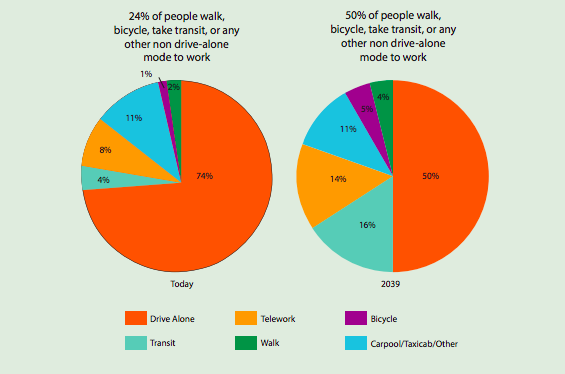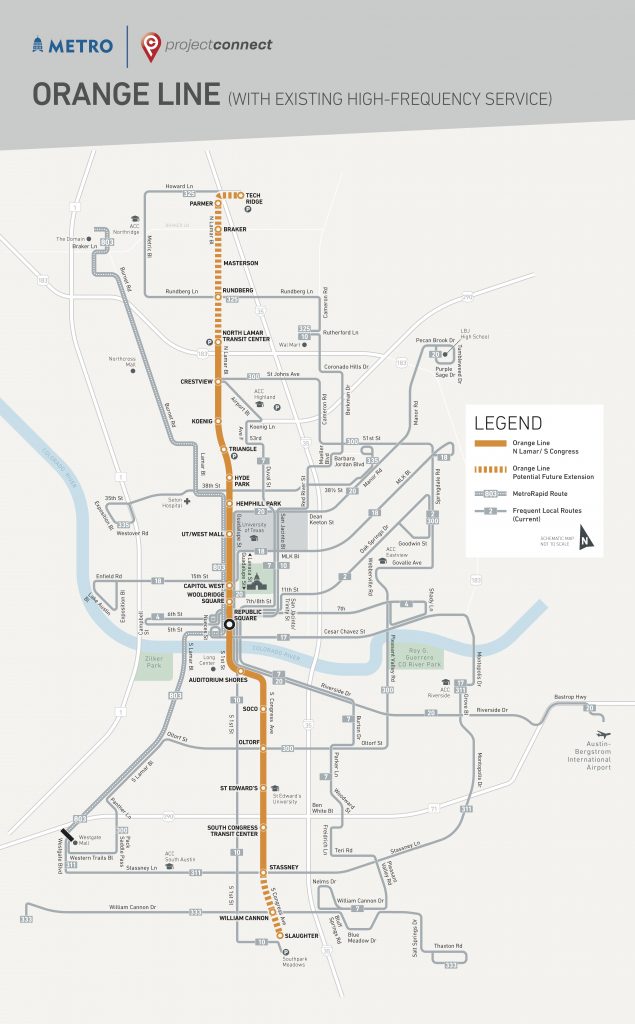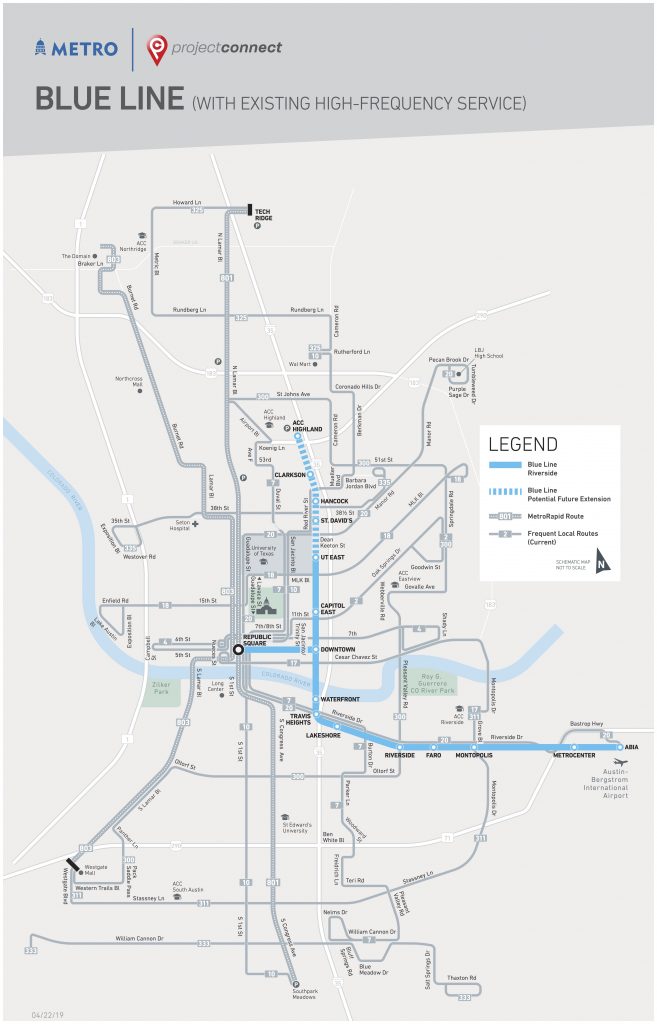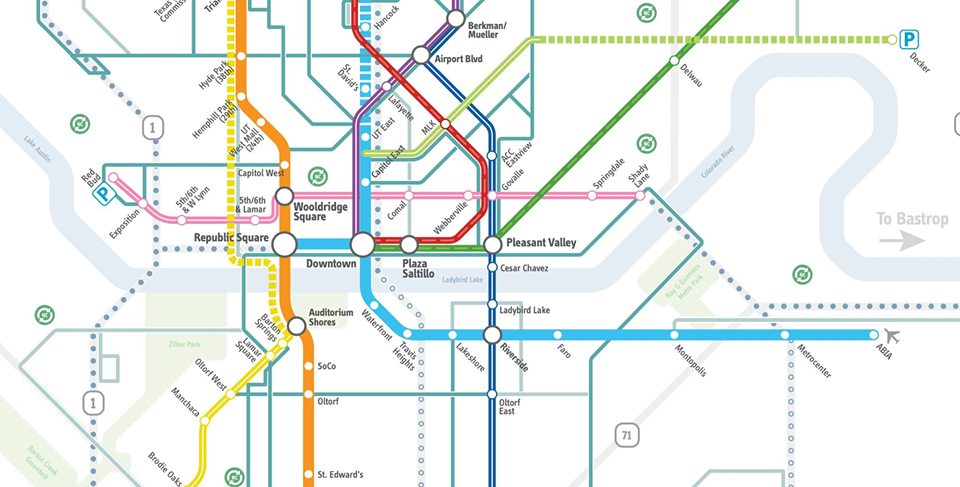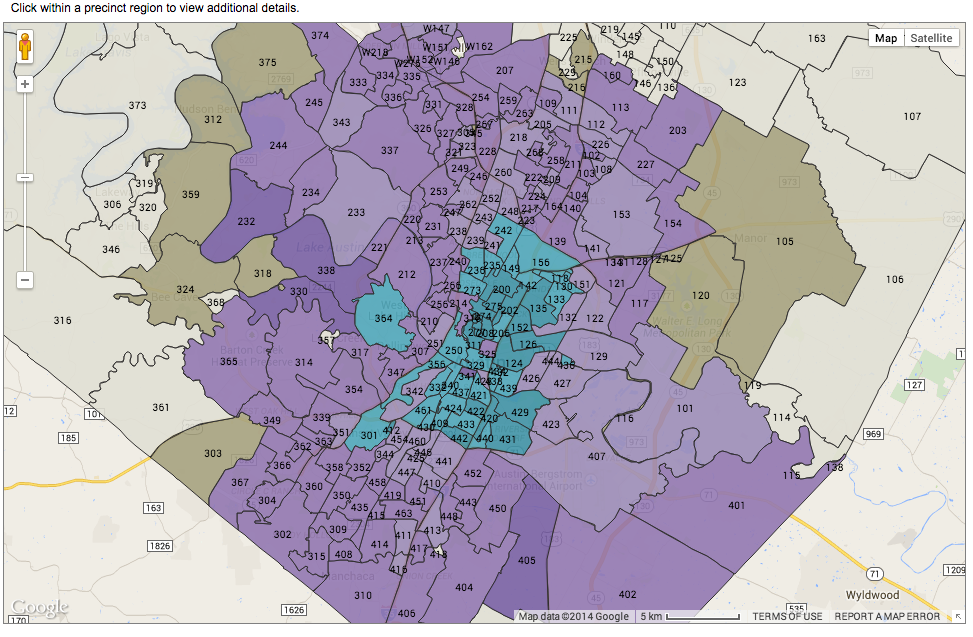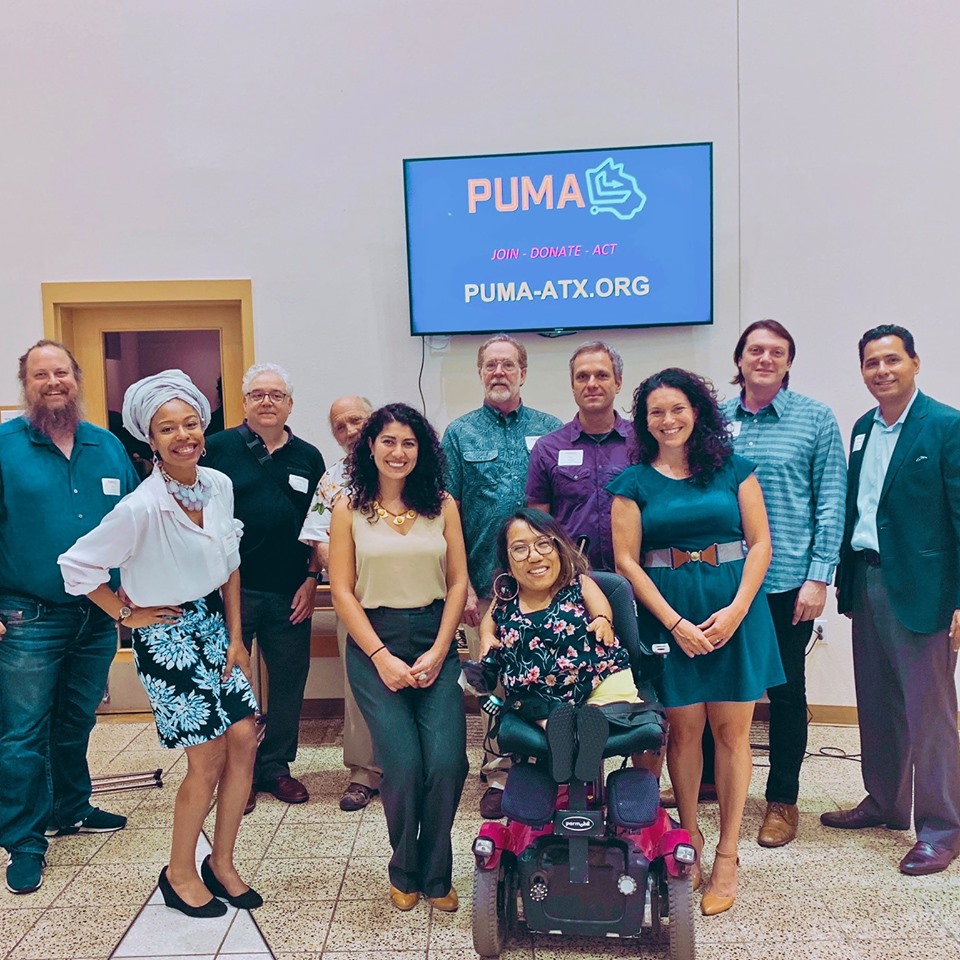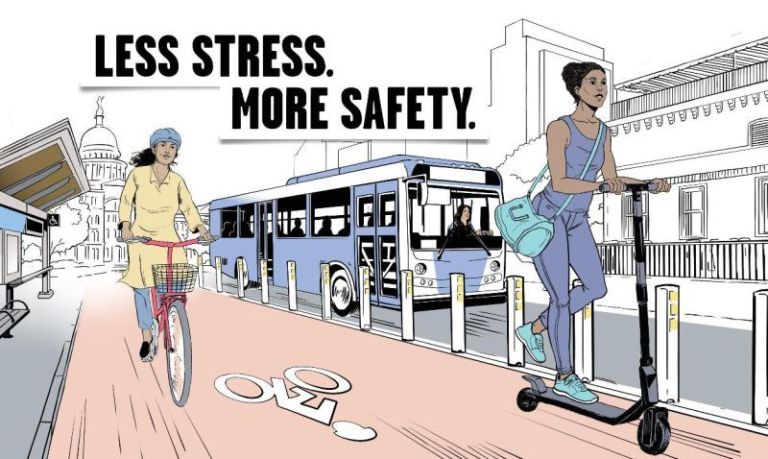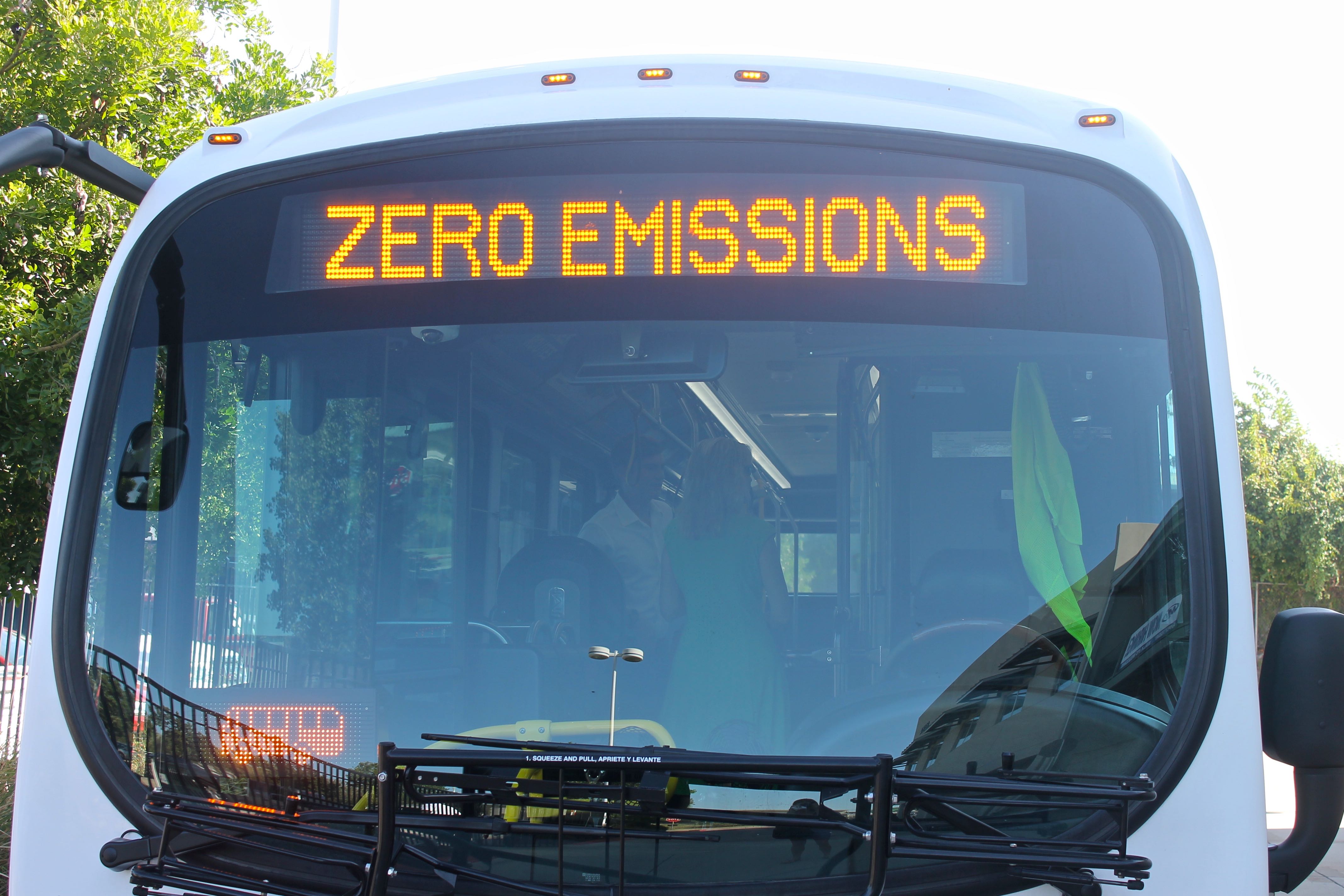Welcome to the latest in our Beyond the Strike series, inspired by the recent global climate strikes and designed to take the big, global issue of climate change and make it local. Through the series, we’re sharing proposed solutions, ideas from inspiring community leaders, and plenty of opportunities for you to get involved.
Climate change and traffic.
They’re two of our city’s biggest and most vexing problems.
They’re affecting both our planet and our quality of life.
And they’re issues that a whole lotta people in Austin are working to solve. (After all, transportation is responsible for more than a third of our city’s carbon emissions and well, everyone hates traffic.)
So how exactly do we go about tackling climate change and our city’s transportation woes? Learn more about what’s being done today and how you can get involved with our “8 Quick Facts You Should Know About Austin’s Plans To Fight Climate Change and Traffic.”
1. Today, 74 percent of all work trips in Austin consist of one person driving alone in their car.
This mode split/mode share (as it’s called in fancy transportation circles) drives a lot of our traffic problems, especially when combined with the fact that Austin’s population is projected to double in the next 20 years, but road capacity is only projected to increase by 15 percent.
2. Austin has a goal of reaching a 50/50 mode split by 2039.
This means reducing our 74 percent drive-alone number to 50 percent. The idea is that by 2039, 50 percent of all commutes will take place via transit, carpool, biking, walking, or teleworking. (The other 50 percent would still occur as they do now – driving alone in personal vehicles.)
The real kicker? Achieving this goal will only maintain Austin’s current traffic levels (despite expected population growth). It won’t necessarily make car traffic any better than it is today… but it would reduce the carbon footprint of our city’s transportation system.
And how will we actually get to a 50/50 mode split? Here’s one of the Austin Strategic Mobility Plan suggestions.
3. Austin is probably going to have a big bond election in 2020… with the goal of funding our city’s first-ever high-capacity transit system.
Right now, Cap Metro is developing a plan for a brand-new public transportation system (called Project Connect), centered around two main spines – the Orange Line and the Blue Line.
If built, the Orange Line would run from the North Lamar Transit Center, south down Lamar, onto Guadalupe (and past Republic Square Park), and onto South Congress Avenue.
The Blue Line would run from the airport, down Riverside, and all the way to the University of Texas.
High-capacity transit runs in lanes that are only for them (aka dedicated pathways). This could be bus rapid transit, which means buses that have their own lane (no other vehicles allowed), light rail (basically, a train), or it could be some sort of autonomous rapid transit. The exact “mode” for these two new lines has not yet been decided, but the idea is for them to provide a fast, reliable transit option.
So what’s a bond election? A bond is essentially just a loan taken out by a local government agency. In taking out the bond, the city has to promise to pay back the money to the lenders, often by taxing its own citizens. That’s why it gets put on the ballot. Come November, it will be up to you to decide if building a high-capacity transit system is worth the cost (exact numbers have not yet been revealed).
4. You can still play a role in shaping what the city’s proposed high-capacity transit system will looks like.
The exact plans for the proposed Orange and Blue high-capacity transit lines have not yet been finalized… which means there’s still time for you to help shape the future of this transit system.
Most significantly, on of the big question still remaining is – what mode will this new system use? Bus-rapid transit? Light rail? Autonomous vehicles?
The mode that is chosen will have a big impact on the cost of the system, as well as its likelihood of being approved by voters.
If you’re interested in getting engaged in this effort, Cap Metro is hosting several open houses in early November:
- November 4th from 5pm to 7:30pm at the Bullock Museum
- November 6th from 5pm to 7:30pm at St. Elmo Elementary
- November 6th from 5pm to 7:30pm at the ACC Highland Campus
- November 7th from 5pm to 7:30pm at the North Austin YMCA
- November 7th from 5pm to 7:30pm at Allison Elementary
5. In recent years, Austinites have voted down rail proposals… twice.
Austin has a history of rolling out big high-capacity transit system plans, only to have them be rejected by voters.
In 2000, a rail system was voted down by a less than one percent margin, or only 2,004 votes. If that rail had passed, today, Austin would have at least a 15-mile rail line going down South Congress, through downtown on Guadalupe and Lamar, and up past Parmer Lane.
In 2014, another rail proposal was struck down by voters. This time, it was a $1 billion bond election with about half the money going to road improvements and the other half toward funding a 9.5 mile rail line (which would have run down East Riverside, through downtown, and up to ACC Highland.
The proposal lost by 14 points. Much of its failure was attributed to the unpopularity of the route itself and that voters weren’t sold on the larger transit vision beyond this one starter rail line. (In general, voters who didn’t live along the proposed rail route didn’t vote for it.)
This time around, many city leaders are hoping to do things differently, applying lessons learned from the past two failed rail elections. The new organization, Transit For Austin (a coalition that includes AISD, ACC, Environment Texas, the Hill Country Conservancy, Huston-Tillotson University, and many others) has just been launched to help support the development of a robust transit system in our city.
“Austin is a big city, however much we all might want to pretend otherwise. And it will get bigger, however much we want to pretend otherwise. We need a big city transit system that will get people out of their cars. We have got to think big. We’ve got to be smart and we must be bold and act now. If we don’t go big and do it soon, we’re lost.” – Texas State Senator Kirk Watson, at the launch of Transit For Austin
6. In addition to a transit system that deals with our traffic problems and reduces carbon emissions, many in the community are calling for a more equitable transit system for Austin.
A lot of this conversation is being led by PUMA (People United For Mobility Action) a new organization dedicated to “transforming Austin so that every person has access to safe, affordable, and convenient choices to get around and meet their daily needs.” In doing this, PUMA hopes to examine each all of Austin’s proposed transportation solutions through the lenses of equity, affordability, justice, accessibility, and environmental concerns.
In doing this work, PUMA also hopes to authentically engage Austinites who traditionally haven’t had a voice in determining our city’s transportation future.
“And we really created this board and this organization out of a diverse group of individuals that span over age, expertise, skills, background, socio economic status, race. We made sure to have a table that everyone could have a seat at…We seek to do what has only been dreamt. To actually help to create a more equitable, effective mobility infrastructure in Austin.” – Yasmine Smith, Board Vice President of PUMA
To learn more about PUMA, you can listen to this podcast interview (featuring Yasmine Smith, David Foster, and Alejandrina Guzman of PUMA) we recorded with our radio partner, Shades of Green.
And if you’d like to get more involved with the work of PUMA, you can fill out this form. (They’re looking for more people to get involved, even if you don’t consider yourself a transportation expert.)
7. The City of Austin has a goal of creating 100 new miles of protected bikeways by the end of 2020.
This will include adding protection (aka something to separate the bike lane from the road – poles, planters, or a raised curb) on existing bike lanes, as well as building entirely new bike lanes. The funding for this buildout will come largely from the 2016 mobility bond (which included $137 million for active transportation).
But just because a bond gets passed, doesn’t necessarily mean that the most robust bike lanes are going to get built. Building these protected bike lanes often means taking away pieces of the road (from cars or parking), which can be fairly controversial.
This is where MoveATX comes into play. MoveATX is a coalition of community leaders, advocates, activists, and organizations that want to see a better mobility future for Austin and all of its residents. Right now, MoveATX is focused on encouraging the City of Austin to build out its protected bikeway network as quickly as possible. They’re doing this primarily by participating in public engagement opportunities ahead of proposed bike lanes projects.
Some upcoming projects that they’ve got their eyes on (and are hoping for more people to engage with) include Stassney Lane (from South Congress to Westgate), Cameron Road, and Southern Pleasant Valley Road. You can sign up to be notified when public engagement opportunities for these bike lane project become available here.
You can learn more about MoveATX by watching the video interview we did with Jim Wick (lead organizer with MoveATX) below.
8. Reducing emissions from our city’s transportation sector won’t happen by mode shift alone. Electric vehicles will also play a role.
In May, Austin City Council passed a resolution aimed at beefing up our city’s plan for electrifying our transportation system, encouraging the shift to electric vehicles and supporting that shift with the necessary charging infrastructure.
As Council Member Alison Alter explained in a press conference announcing this resolution, “we recognize that we cannot reach Austin’s 2050 net-zero goals through mode-share shifts alone. As we’ve heard from staff, in order to meet our emission goals, we need not only to reduce the total percentage of trips taken in single-occupancy vehicles, but we also need to shift the entire transportation system. That includes electrifying the city’s fleet, reimagining our bus system, changing the types of load-carrying trucks on the road, and switching more passenger vehicles over to clean energy.
It also means making this EV technology more accessible and more equitable. It means taking advantage of the economic possibilities that EV electrification of our transportation fleets provide.”
So how is that going to happen exactly? Austin already has more than 250 electric vehicle charging stations throughout the city and Cap Metro has already approved a contract to buy its first 10 electric buses. But a lot more still needs to be done, the specifics of which will begin to be worked out in the update to Austin’s Community Climate Plan. That effort is just getting kicked off now. If you’d like to be involved, you can fill out this form.
And if you’d like to learn more about the specifics of what it will take to electrify our city’s transportation system, you can listen to this interview we did in May with Joep Meijer (local climate activist and co-founder of Climate Buddies).


